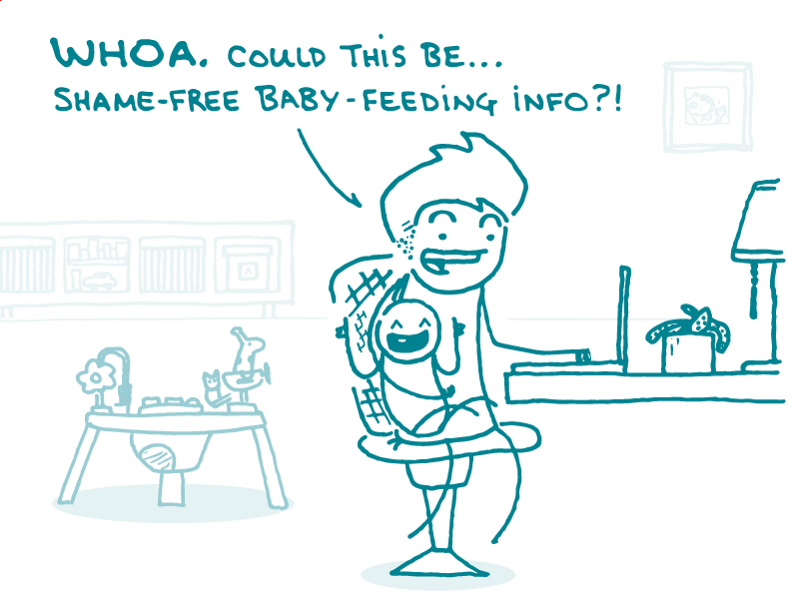
Here at We ❤ Health Literacy Headquarters, we try to keep shame and blame far away from our health materials. For example, we recently banished some scary words for moms and babies. And this week, we’re taking on an even thornier topic: writing about breastfeeding.
Promoting breastfeeding across the board might seem like a no-brainer. It’s natural! It provides lots of health benefits! Those things are true — but like so many parts of parenting, the reality can be more complicated.
Some people want to breastfeed and physically can’t: one study found that more than 1 in 10 new moms had to wean their babies early because of physical problems like low milk supply. Then there’s the lack of paid parental leave, spotty workplace pumping protections, competing caregiving needs for other children and family members… we could go on.
And on top of all the reasons people might be unable to breastfeed, there are also plenty of valid reasons they may not want to breastfeed — extremely unpleasant physical sensations or severe emotional distress, for example! So give new parents a break and skip the stigma around infant feeding options.
Follow these tips to bring nuance and empathy to the breastfeeding conversation:
- Be realistic. The serene young mother feeding her cooperative angel baby in a field of wildflowers on a warm summer’s day? Leave her in a stock photo where she belongs. Acknowledge that breastfeeding — like most bodily functions — can be painful, messy, distressing, and incredibly inconvenient. Women can handle the truth.
- Skip the hysteria. New mothers get bombarded with urgent-sounding advice from all sorts of sources. It can be hard enough to weed through the pseudoscience and sales pitches without added anxiety from stress-inducing health materials. So stay calm and forgo the clickbait warnings about the perils of formula supplementation. You know what won’t help your audience increase their milk production? A panic attack.
- Talk about — and normalize — the range of healthy ways to feed babies. By all means, promote breastfeeding and offer information to help mothers do it successfully. But don’t leave the formula crowd out of the conversation. Remember, breast versus bottle is not a moral dilemma. It’s a health decision that women can make for themselves when they have all the facts.
- Make materials inclusive for all kinds of parents and families. Don’t assume that new parents have the luxury of staying home all day with their babies — offer tips and adaptations for a range of real-world scenarios. Diverse images can help make your materials welcoming to parents of different races and ethnicities. And if you’re writing for a transgender or non-binary audience, try using inclusive terms, like chestfeeding.
The bottom line: When you’re writing about breastfeeding, forget the hard sell — focus on being empathetic, realistic, and inclusive.
Browse recent posts